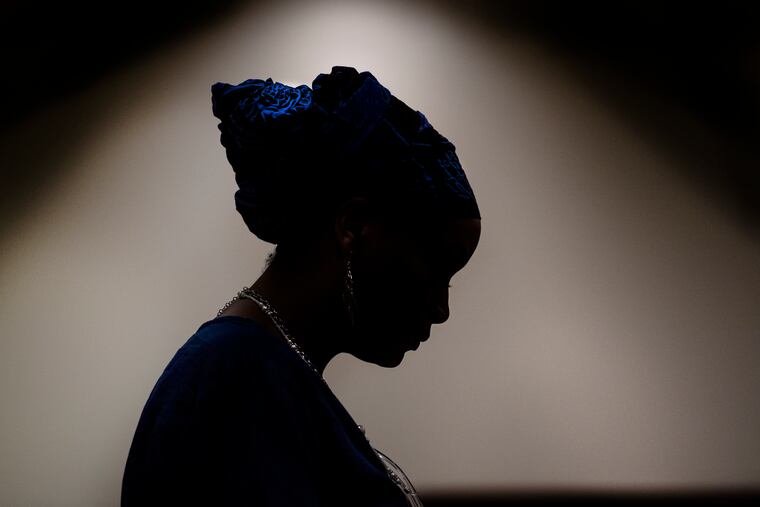When Gabby Petito disappeared, the world watched. Destini Smothers was ignored. | Opinion
If a greater percentage of African American and Indigenous women go missing and they experience higher rates of fatal domestic violence, why does the media continue to ignore their plight?

After taking a trip with her boyfriend, a beautiful young woman went missing, never to be heard from again. The last person to see her alive is believed to be her boyfriend, though he has denied any involvement in her death and has since gone missing himself. Her family desperately searched for her, traveling far and wide, pleading with local police and the media for help, hoping someone, anyone would have a clue into her disappearance. When her body was discovered, all hopes of finding her safe and alive were dashed — she was gone forever, and her loved ones would never hold her in their arms or see her brilliant smile again. They want answers and there are several questions about her boyfriend’s connection to her death since he was the last person to see her alive, according to all accounts.
You may be thinking about Gabby Petito, the 22-year-old woman whose body was recently discovered near the campsite she and her boyfriend, Brian Laundrie, visited in Utah in August 2021.
» READ MORE: Body believed to be Gabby Petito’s found near Grand Teton National Park, FBI says
But I was writing about Destini Smothers, a 26-year-old woman from New York who, in November 2020, traveled with Kareem Flake, her boyfriend and father of her two children, from their home in Troy, N.Y., to Queens to both attend a funeral and to celebrate her birthday. When her mother didn’t hear from her, she contacted her boyfriend, who only said that she left their car after an argument, upset because she wanted to go spend time with her friends after they attended a bowling party. He said she left without taking her keys, wallet, or phone. Her mother didn’t believe him and became frantic. She contacted local authorities in November, but she didn’t receive much information about the investigation until March when she was notified that her daughter’s body was found.
In the days after she went missing, Smothers’ disappearance did not appear on national news outlets, every hour or with breaking news segments on 24-hour cable news shows. Smothers was African American and like so many African American girls and women, her disappearance barely made a blip in local media, much less national coverage.
When Black girls and women go missing, the country doesn’t come to a standstill the way it does when a white girl or woman goes missing.
While African American females make up less than 7% of the population, they account for about 10% of all missing persons with an estimated 64,000 of them being missing at any given moment according to the Black and Missing Foundation.
So why the disparities in reporting? If a greater percentage of African American and Indigenous women go missing and they experience higher rates of fatal domestic violence, why does the media continue to ignore their plight and erase their stories from headlines and greater narratives about missing women? Certainly, both women deserve to have the same energy and effort put forth toward solving their cases and bringing their killers to justice.
It’s part victim-blaming and a lack of empathy for people who are regularly portrayed as criminals, violent, angry, or otherwise bad people, whether on television shows and in movies or in the news. Too many people think the bad things that happen to people of color are more than likely their own fault and the media reinforces these ideas by disproportionately reporting people of color as perpetrators of crimes.
There is also a lack of empathy for marginalized people living in a society where whiteness is universal and to be anything other than white is to be generally regarded as inferior. Part of the issue is in the media’s commitment to upholding white supremacy by shaping narratives that place white people at the top of a racial hierarchy, thereby prioritizing their wants, needs, and experiences above others. There is no push to regard nonwhite people as equally deserving of empathy, care, and consideration, so when they are victims of violent crimes, their stories are minimized or completely erased to keep white innocence and fragility centered. And due to journalism’s gatekeeping, people of color remain severely underrepresented in the newsrooms to even raise awareness about what’s happening in marginalized communities and amplify their stories.
Every time this issue comes up, people express shock and anger at the disparities for a short while but go back to their lives, doing next to nothing to bring about necessary change.
I couldn’t sit idly by and do nothing anymore and that is why I joined my two friends in creating Black Girl Missing, a podcast devoted to telling the stories of Black girls under age 18 who have gone missing. We recapture the often-scant details surrounding their disappearances and weigh in on where and how investigators went wrong and what more could have been done to find the girls. Since launching the podcast, we have had families reach out to thank us for covering their stories and raising awareness because they feel like so few people care about their missing loved ones.
We are doing our part but there is so much more work to do. Every missing woman and girl deserves the same attention and effort directed toward their safe returns.
Feminista Jones is an author and doctoral student at Temple University. She is the cohost of Black Girl Missing podcast and a fierce advocate for Black women and girls.